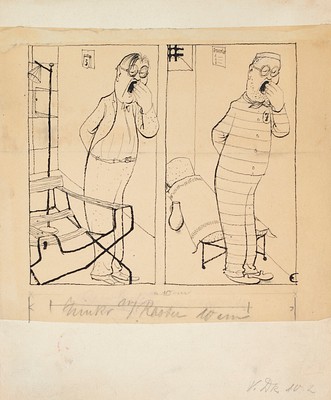Christoph Clavius Astrolabium. Mit Holzschnitt Titel-Vignette, über 350 Textholzschnitten u. Holzschnitt-Buchschmuck. Rom, Tipografia Gabiana for Bart
Two ways to bid:
- Leave a max absentee bid and the platform will bid on your behalf up to your maximum bid during the live auction.
- Bid live during the auction and your bids will be submitted real-time to the auctioneer.
Bid Increments
| Price | Bid Increment |
|---|---|
| EUR€0 | EUR€10 |
| EUR€100 | EUR€10 |
| EUR€200 | EUR€20 |
| EUR€300 | EUR€30 |
| EUR€420 | EUR€30 |
| EUR€480 | EUR€20 |
| EUR€500 | EUR€50 |
| EUR€2,000 | EUR€200 |
| EUR€3,200 | EUR€300 |
About Auction
Dec 14, 2021
Jeschke Jádi Auctions Berlin GmbH info@jvv-berlin.de
- Lot Description
Astronomie - Mathematik
Clavius, Christoph
Astrolabium. Mit Holzschnitt Titel-Vignette, über 350 Textholzschnitten u. Holzschnitt-Buchschmuck. Rom, Tipografia Gabiana for Bartolomeo Grassi, 1593. Gr.-8° Prgt. d. Zt. mit hss. RTitel.
Tomash & Williams C96. - Edit16 12681. - USTC 822860. - Erste Ausgabe. - Ex-Libris Erwin Tomash. Clavius (1538-1612) war Mathematiker und Jesuitenpater am Collegio Romano. Von seinen Zeitgenossen "Euklid des 16. Jahrhunderts" genannt, wurde er vor allem durch die unter seiner fachlichen Leitung durchgeführte Kalenderreform zum Gregorianischen Kalender berühmt. Er war Begründer der wissenschaftlichen Arbeit an der Vatikanischen Sternwarte und entwarf auch astronomische Instrumente wie Sonnenuhren. Clavius verwendete 1593 in den Sinustabellen seines Astrolabiums als Dezimaltrennzeichen zwischen dem ganzzahligen Teil und dem Zehntel einen Punkt. Nach Einschätzung von Carl Boyer war er damit der erste Mensch, der den Dezimalpunkt mit einer klaren Vorstellung seiner Bedeutung verwendete. - Text seltener etwas gebräunt und fleckig, leichte Flecken am Seitenkopf, gelegentlich leichte Wurmgänge, stärker ausgeprägt auf S. 543-573, die sich auf den oberen Teil des Buches beschränken und nur gelegentlich einige Buchstaben berühren. - Selten.
Astronomy. - Mathematics. - With woodcut title vignette, over 350 woodcuts in text and woodcut book decoration. - Ex Libris Erwin Tomash. Clavius (1538-1612) was a mathematician and Jesuit priest at the Collegio Romano. Called "Euclid of the 16th century" by his contemporaries, he became famous above all for the calendar reform to the Gregorian calendar carried out under his expert guidance. He was the founder of scientific work at the Vatican Observatory and also designed astronomical instruments such as sundials. In 1593, Clavius used a dot as a decimal separator between the integer part and the tenth in the sine tables of his astrolabe. In Carl Boyer's estimation, he was thus the first person to use the decimal point with a clear idea of its meaning. - Text rarely somewhat browned and spotted, light spotting to page head, occasional light worming - more pronounced on pp. 543-573 - confined to the upper part of the book and only occasionally touching a few letters. - Rare.
- Buyer's Premium



 EUR
EUR CAD
CAD AUD
AUD GBP
GBP MXN
MXN HKD
HKD CNY
CNY MYR
MYR SEK
SEK SGD
SGD CHF
CHF THB
THB














